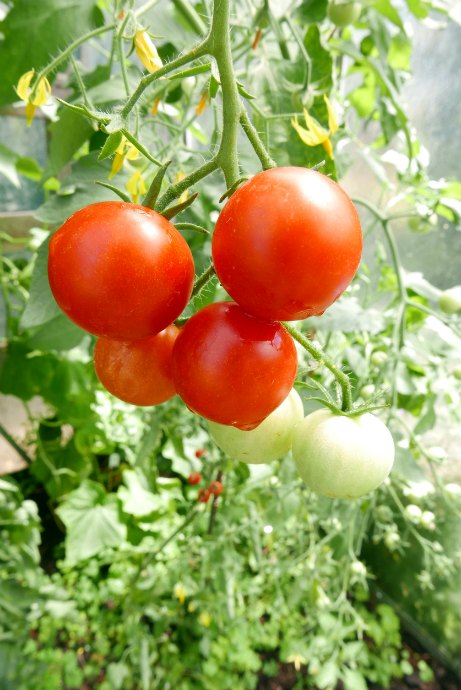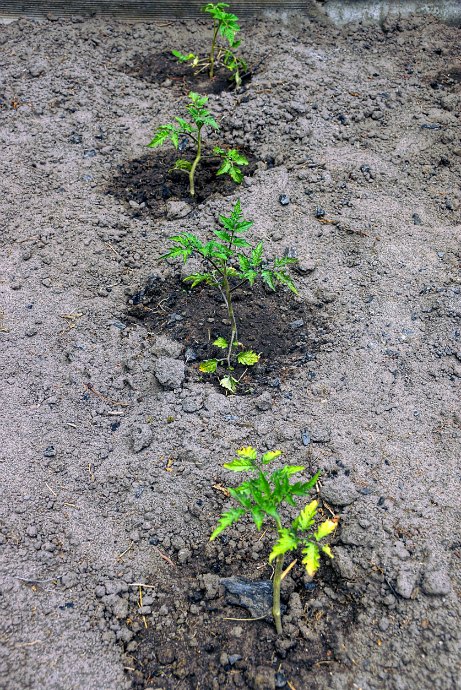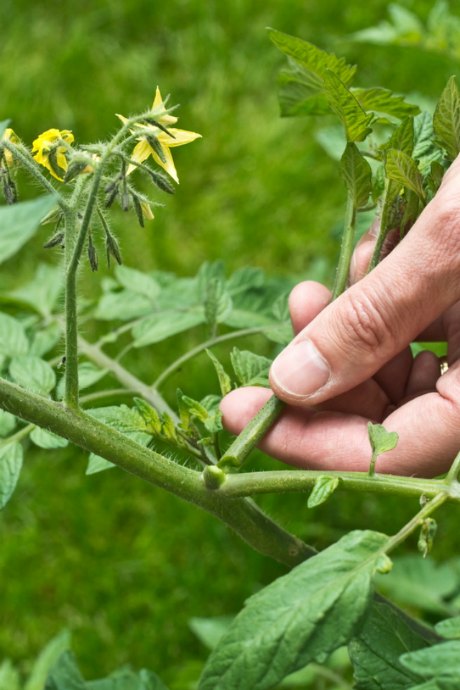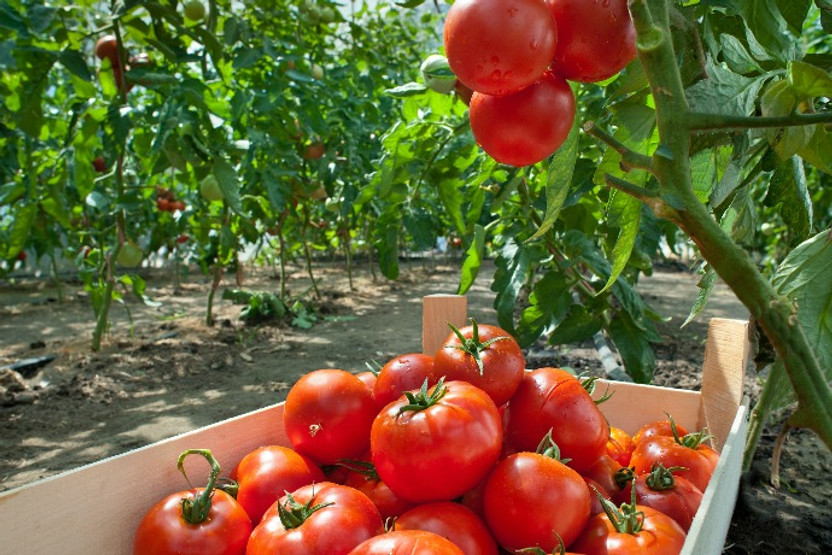From Beefsteak to Brandywine: How to Grow Tomatoes This Summer
Posted by Julie on May 17th 2018
Homegrown tomatoes can be one of the best parts of summer. It's satisfying to pick, slice, and serve tomatoes that you grew yourself. Whether you grow them at home in a container or a garden, keep some basic tomato growing tips in mind.
We've compiled our own lessons learned from growing tomatoes, along with smart advice from other sources. We hope it will help encourage you to grow your own tomatoes this summer.
How to Grow Tomatoes: Determinate vs. Indeterminate
The first question to ask yourself is whether you plan to grow tomatoes in containers or in a garden. Determinate varieties are ideal when you want to grow tomatoes in pots. Indeterminate varieties are well-suited to growing environments where space is less of a concern, such as gardens.
Determinate tomato plants stop growing when they reach a set height. All of the fruit grows and ripens at once. Some varieties need tomato cages or stakes for support, while other varieties are compact enough to support their own weight.

Indeterminate tomato plants continue to grow and produce fruit until the first frost. Some varieties can reach heights over 10 feet. Tomato cages or stakes are a must for indeterminate varieties. These plants produce fruit continuously and should be pruned regularly.
Check out the Tomato Chooser from Bonnie Plants to help figure out what variety you might like to grow. The first question is whether you prefer determinate or indeterminate varieties, which will narrow your selection. Then you can specify the preferred size of your plant and your tomatoes, along with other relevant criteria.
How to Grow Tomatoes: Getting Started
To prepare the soil for tomato plants, it's helpful to warm it up in advance. The Spruce suggests placing a layer of black plastic over the soil of your pots or garden a couple weeks before planting. The plastic will help the soil absorb and retain heat. Your plants are more likely to thrive and produce tomatoes sooner.
Also, when it comes to tomato plants -- the more sun, the better. The exception is the day you plant them. The Old Farmer's Almanac recommends planting when there isn't full sun, to help the young plants adjust to the great outdoors. Make sure to give them plenty of water after planting, which will encourage root growth.

If you choose to grow determinate tomato plants in containers, Bonnie Plants recommends an 18-inch diameter pot. They also advise leaving an inch of space between the soil and the top of the pot to allow room for mulching. Mulch will help keep the soil moist.
When growing tomatoes from seed, whether in containers or a garden, allow space between them for air to circulate. Thin out sprouts so they aren't crowded. Once the plants start growing taller, they will need room to branch out. When planting seedlings, cover them up with soil to the first set of leaves. The parts of the plant stem that are under the dirt will grow roots, which makes the plant stronger and helps it bear more fruit.
Finally, be sure to place stakes or tomato cages when you plant. Don't wait until root systems are established; you may disturb them by inserting stakes or cages later.
How to Grow Tomatoes: Maintaining and Harvesting
Tomatoes need to be watered regularly, but there are some important caveats. One, water the soil and not the leaves. Two, water for a long period once a week, or every five days if the weather is hot and you've had little precipitation. If you go on vacation, get someone to water your tomatoes. Otherwise, they'll be prone to cracking and rotting at the blossom end.
Determinate tomato plants don't require pruning, but it is helpful for indeterminate varieties. Suckers are stems that grow in the fork between branches. Remove them carefully with garden shears. If you leave suckers in place, they will not bear fruit; they only drain energy from the rest of the plant. However, you can grow a whole new tomato plant from a sucker. Amazing!

You can also prune leaves from the lower foot of the main stem when your plants are about a yard high. The Spruce recommends pruning these leaves because they're most likely to contract diseases and transfer them to the rest of the plant.
Wait until tomatoes are fully red but still firm before picking. Some may fall or be knocked off vines before they are ripe. The Old Farmer's Almanac recommends putting them in a paper bag with the stem side up. Don't set them on a window sill where they may rot. Food and lifestyle expert Kevin Lee Jacobs agrees, noting that "darkness, warmth, and naturally-occurring ethylene gas are all a tomato needs to turn from green to red." That's why a paper bag is the perfect environment for tomatoes that didn't get a chance to ripen on the vine.
Finally, if frost threatens before all of your tomatoes have ripened, you can pick them early and use the paper bag trick. Also, snip the top of each of the main stems to keep the plants from getting taller and direct energy into growing and ripening fruit instead.
 Free shipping over $49
Free shipping over $49










